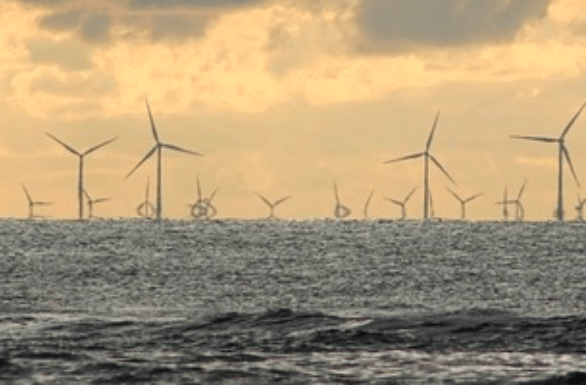The government on Friday will receive bids to install 700 MW of turbines on the seabed off its southwest coast near The Hague, enough to supply about 1 million homes. Once the costliest of the mainstream clean-energy technologies, offshore wind costs have plunged sharply in the past two years as manufactures brought out bigger turbines.
That and expectations that electricity prices will rise spurred developers Orsted A/S and Energie Baden-Wuerttemberg AG to offer to build offshore wind farms in Germany that rely on market prices instead of subsidies for a payback. Anticipating the possibility of much lower bids, Dutch authorities changed the rules of their auction to accommodate proposals that don’t request funding from government and hope developers are bold enough to repeat the offers they made in Germany in April.
“It’s a market gamble basically, it just comes down to the developers involved and how bullish they feel about electricity pricing,” said Simon Luby, head of due diligence at K2 Management, a consultancy that advises the wind industry. “Some recent projects maybe have cut things too close to the bone; there isn’t very much safety margin left.”
Projects without subsidies would sell their electricity on the wholesale power market. That would leave developers to take their chances that prices will be strong enough for them to make a profit over the life of the wind farm, which may last two decades or more. That’s a contrast with how most renewables are built, backed by either a feed-in tariff or power purchase agreement that locks in a rate at which their assets earn for what’s produced.
Developers are betting that power prices will rise as European governments shut down coal and nuclear plants. Wholesale electricity in the Netherlands costs on average about 39 euros ($45.92) a MWh. That may increase with the introduction of a price set on carbon pollution from fossil fuel plants. The carbon price will be set at 18 euros a metric ton from 2020 and is due to double over the decade, according to CPB, the Dutch central planning agency.
“The introduction of a carbon price with a steep trajectory is bullish for Dutch power prices,” said Bruno Brunetti, head of power strategy at Pira Energy, which is part of S&P Global Platts. It hurts profitability of coal stations making early retirements more likely, he said.
German Result
Since the German auction, developers have been thinking about whether they could build similar subsidy-free projects elsewhere. So far, auctions in the U.K. produced big plunges in the cost of offshore wind but not facilities that rely on market prices alone.
Last month, Statoil ASA and Masdar Abu Dhabi Future Energy Co. said they were considering zero bids, given the right circumstances. The Norwegian oil company’s CEO Eldar Saetre said that he’s looking at participating in the Dutch auction.
“It wouldn’t surprise me if we saw subsidy-free bids in the Netherlands this year,” said Lisa McDermott, an executive director of project finance at ABN AMRO Bank NV, in a panel discussion in London.
The Netherlands Enterprise Agency will collect bids from interested developers on Friday and may issue a statement releasing some details. Authorities probably will wait until January to award rights to build the facilities following scrutiny of each bid. It isn’t clear which developers will bid and whether any are ready to offer subsidy-free wind farms.
“That’s the question that everybody is trying to answer right now,” said Jerome Guillet, managing director at Green Giraffe, a firm that advises renewable energy developers and investors. “It’s tough to make it work.”
Enough Done?
Some analysts are skeptical that this will be enough to sway developers. One of the main reasons that the German auction resulted in zero-subsidy projects is because the projects don’t have to be constructed until 2024, so the companies are able to reassess the power market a few years down the line.
“The only two players out there to win zero-subsidy bids are utilities Orsted and EnBW and they are yet to make a financial decision on the projects,” said Keegan Kruger, wind analyst at Bloomberg New Energy Finance. The research group is projecting that the wind farm will cost $2.7 billion to install.
These two companies have also said they’re assuming turbines on the market by 2024 will have almost doubled the generating technology over today’s models. This is expected to help them make money without subsidies.
Each of the national offshore wind auctions offer different terms for developers, making it difficult to compare separate contests. Germany, for example, builds the power link between wind farms and the grid and picks the site where developers will work. Britain, by contrast, makes developers pay for grid connections and site surveys, introducing a risk that the facility won’t receive planning permission from local authorities.
“The circumstances are certainly different here in the Netherlands,” said Jasper Vis, Netherlands country manager at Orsted. “The time between winning a tender and realizing a project in the Netherlands is a lot shorter than in Germany. Also the average wind speed on the German site is higher than off the Holland coast.”














